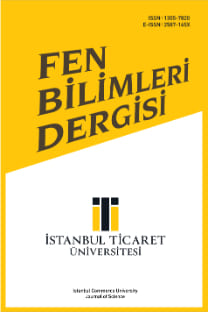BATI AFRİKA’DAKİ EĞİTİM KURUMLARININ MEKÂNSAL NİTELİKLERİNİN EĞİTİM SÜREKLİLİĞİNE OLAN ETKİSİNİN İNCELENMESİ
Birey olan insanın temel haklarının başında gelen eğitim hakkı evrenseldir. Günümüzde gelişmiş, gelişmekte olan ya da az gelişmiş ülkelerin tümündeki mevcut durumlar ve şartlar göz önüne alındığında, ne yazık ki her ülke çocuğuna sağlanabilen eşit fırsatlar söz konusu değildir. Buna rağmen, belirli müfredatların uygulanması ve sonucunda başarılı ve topluma faydalı insanların yetişmesi adına mevcut eğitim yapıları üzerinde gerekli gelişim senaryoları ve destek hizmetlerinin geliştirilip uygulanmasıyla eğitim temel hakkı sağlanmış ve daha verimli yarınlara giden yol açılmış olacaktır. Çalışmanın literatür kısmında eğitim kurumlarında mimari tasarımın önemi ve belirli standartları açıklanmıştır. Özgün bölümde ise ele alınan bölgelerde eğitim sistemleri, mimari tasarımlar, kullanılan malzemeler incelenmiş ve eğitim mekanlarının kullanıcısı olan öğrencilerin memnuniyet anketi verilerinden yararlanılmıştır. Son bölümde sonuçlar ile ilgili çözümlemeler yaparak makale hakkında sonuçlar yazılarak önerilerde bulunulmuştur.
Anahtar Kelimeler:
Batı Afrika, eğitimin evrenselliği, eğitim yapıları, mekânsal nitelik, mimari düzenlemeler
INVESTIGATION OF THE EFFECTS OF THE SPATIAL QUALIFICATIONS OF THE EDUCATIONAL INSTITUTIONS IN WEST AFRICA ON THE CONTINUITY OF THE EDUCATION
Education right, which is at the forefront of the fundamental rights, is universal. Given the current situation and circumstances in all developed, developing, underdeveloped countries, unfortunately, they don't have equal opportunities for children. Nevertheless, with development and implementation of the necessary development scenarios and support services on existing educational structures for implementation of certain curricula and as a result of the development, the basic right of education will be provided and more productive future will be created. In the literature research, standards and importance of architectural design in educational institutions is explained. In the main section, education systems, architectural designs, materials used in regions discussed and satisfaction survey data of students as the users of educational structures were used. In the last section, results are analyzed and suggestions are made by writing results of the article.
Keywords:
Architectural arrangements, buildings of education, physical attributes, universality of education, West Africa,
___
- Anderson, W. (2008), Green up! An A-Z of Environmentally Friendly Home Improvements, Green Books, Cornwall.
- Atta-Asamoah, A., (2017), “Head-to-head: Is Africa’s Young Population A Risk Or An Asset?”, BBC News, 28.02.2017, http:// www.bbc.com/news/world-africa-25869838.
- Berry, M.A., (2002), Healthy School Environment and Enhanced Educational Performance, 22.06.2006, www.jjcommercial.com
- Ehrenkrantz, E.D., Eckstut, S., (1995), Design for Flexibility, 26.03.2006, www.electronic-school. com/e&e.html
- Flutter, J., Rudduck, J., (2004), How To Improve Your School, Paperback – February 28, 2004, UK.
- Goldstein, R.J., Ibele, W.E., Patankar, S.V., Simon, T.W., Kuehn, T.H., Strykowski P.J., Tamma, K.K., Heberlein, J.V.R., Davidson, J.H., Bischof, J., Kulacki, F.A., Kortshagen, U., Garrick, S., Srinivasan, V., Ghosh, K., Mittal, R., (2010), “Heat Transfer: A Review of 2005 Literature”, International Journal of Heat and Mass Transfer, 53(21-22), 4397-4447.
- Griffin, T., (1990), The Physical Environment of The Collaege Classroom and its Affects on Students, Campus Ecologist, 8(1).
- Halliday, S., (2010), Sustainable Construction, Elsevier Press, Oxford.
- Lackney, J. A. (1999), Reading A School Building Like A Book: The Influence Of The Physical School Setting On Learning And Literacy, 11.04.2006, http://schoolstudio.engr.wisc.edu/readingschool.html
- Prakash, N., Fielding, R. (2007), The Language of School Design, Design Patterns for 21st Century Schools, Designshare.
- Söylemez, M.M., (2016), “Mahfuzat: Batı Afrika’da Bir İslam Cumhuriyeti: Moritanya“, Yakın Doğu Üniversitesi İlahiyat Fakültesi Dergisi, 2(1), 135-157.
- ISSN: 1305-7820
- Yayın Aralığı: Yılda 2 Sayı
- Başlangıç: 2002
- Yayıncı: Doç. Dr. Necip Şimşek
Sayıdaki Diğer Makaleler
BEYLİKDÜZÜ İLÇESİ’NİN ERİŞİLEBİLİRLİK AÇISINDAN İNCELENMESİ
Fatma Zehra ERCAN, Tuncer TOPRAK
TEKSTİL VE KONFEKSİYON SEKTÖRÜNDE İŞ SAĞLIĞI VE GÜVENLİĞİ: Trakya Örneği
KÜTLE SÖNÜMLEYİCİ ÇELİK ÇATI SİSTEMLİ BETONARME BİR BİNANIN DEPREM DAVRANIŞI
BULANIK AHP ve BULANIK TOPSIS YÖNTEMİ İLE TEDARİKÇİ SEÇİMİ: PERAKENDE SEKTÖRÜNDE BİR UYGULAMA
Ayşenur ONAT, Sibkat KAÇTIOĞLU
KENT İÇİ ULAŞIMDA AKTARMA MERKEZLERİNİN ROLÜ VE YENİBOSNA AKTARMA MERKEZİ PROJESİ
OTOMOTİV SANAYİİNDE TEDARİKÇİ PERFORMANS DEĞERLENDİRMESİ İÇİN BİR MODEL ÖNERİSİ
